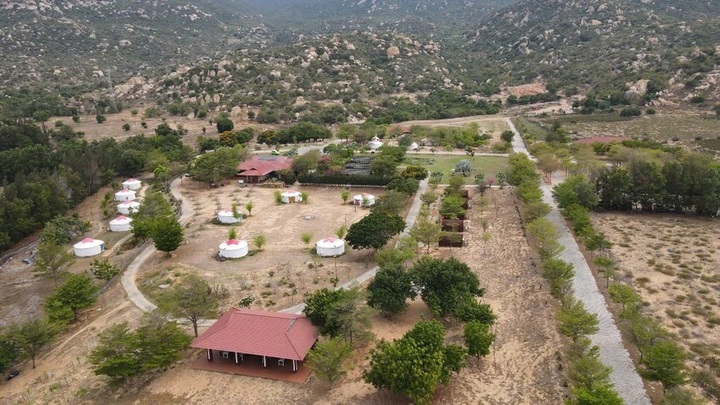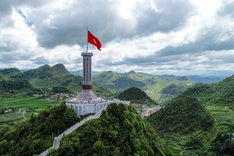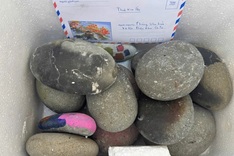
An overview of the Ho Ba Be tourism project. Photo by Plo
According to a report by the provincial inspectorate, more than 15 years after receiving the investment certificate, the project developer, Son Hai Joint Stock Company, was found to lack financial capacity, be unable to mobilise capital, and have a limited understanding of investment, land, and construction laws.
As a result, the company has failed to complete the necessary legal procedures for the project. In addition, the company illegally built the Tanyoli tourism development.
The Ho Ba Be Tourism Project was granted an investment certificate in 2009. It initially covered 20 hectares and included the mountain and the coastal bay. After multiple adjustments, the project's scale was increased to 47.7 hectares.
Located along the scenic Ca Na, Phan Rang coastal road in Thuan Nam District, with a unique terrain of both mountains and sea, the project was expected to become a highlight of Ninh Thuan tourism, attract large numbers of tourists, generate employment, and improve local livelihoods.
However, Son Hai JSC did not proceed with land and project-related legal procedures after receiving the investment certificate. Instead, the company submitted a request to expand the project scale, which the provincial authorities rejected.
When the coastal road began construction, the chairman of Son Hai JSC reportedly negotiated to acquire more than 10 hectares of land from residents outside the approved project boundaries. He constructed the Tanyoli area without permission, violating the land laws.
The provincial inspectorate noted that state management agencies also bear responsibility for these violations. In particular, the Department of Planning and Investment initially provided unclear reports on the project's progress, which led to misunderstandings about its implementation.
The department once reported, "80 percent of the construction work at the mountain foot area has been completed, including a grass slide, football field, main road, and hotel ground levelling." These were unauthorised structures built outside the project area, while the land officially allocated by the state remained undeveloped.
As a result, the people's committee approved several adjustments to the project, eventually increasing its scale to more than double the original size by the fourth revision.
The inspectorate has recommended that the provincial government instruct the Department of Finance, Construction, the Department of Agriculture and Environment, and the Land Development Centre of Thuan Nam District to review and correct their mistakes. The proposal includes holding responsible individuals and advisory departments accountable for their roles in the violations.




















